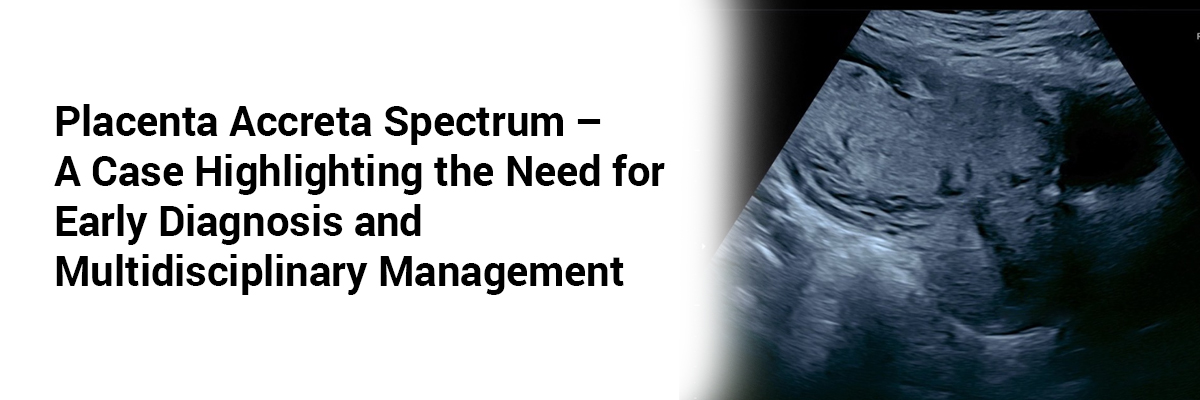
Published On: 19 Jun, 2025 12:45 PM | Updated On: 19 Jun, 2025 12:59 PM
Placenta Accreta Spectrum – A Case Highlighting the Need for Early Diagnosis and Multidisciplinary Management
Placenta accreta spectrum (PAS)
refers to abnormal invasion of the placenta into or through the uterine wall, ranging
from accreta to increta and percreta, and is a major cause of maternal
hemorrhage and peripartum hysterectomy. This case underscores the urgency of
early recognition and coordinated care in high-risk pregnancies.
Case
Summary
- Patient: 31-year-old, G4P1, with a previous cesarean section,
presenting at 26 weeks of gestation with abdominal pain and intrauterine
fetal demise.
- Initial management: Imaging via ultrasound and MRI detected retained
placenta and abnormal placental implantation.
- Intraoperative findings: Manual extraction failed due to placenta accreta;
emergency subtotal hysterectomy was performed under general anesthesia.
Notably, dense omental adhesions, a displaced bladder, distorted uterine
anatomy suggestive of a unicornuate uterus, and significant blood loss
necessitating transfusion were encountered.
- Histopathology: Confirmed placenta accreta with chorioangiomatosis.
Key
Insights
- Early Identification is
Crucial
- Risk factors such as prior cesarean delivery and
uterine anomalies warrant thorough antenatal evaluation, including
targeted ultrasound and, where available, MRI to assess placental depth
and uterine invasion.
- Peripartum Hysterectomy as
Definitive Management
- In cases where placental separation is unsafe or
impossible, timely hysterectomy—preferably subtotal to minimize operative
time and blood loss—is life-saving.
- Multidisciplinary
Preparedness Saves Lives
- Successful outcomes depend on coordinated teams:
obstetrics, anesthesia, blood bank, interventional radiology (where
available), and critical care. Preemptive planning for massive hemorrhage
and transfusion requirements is mandatory.
- Complex Anatomy Requires
Surgical Adaptability
- Unexpected uterine malformations or adhesions may
complicate standard surgical approaches, emphasizing the importance of
intraoperative flexibility and expertise.
- Postoperative Monitoring and
Future Counseling
- Intensive postoperative observation for hemorrhage,
infection, and hemodynamic stability is essential. Patients should
receive preconception counseling regarding the high recurrence risk of
PAS in future pregnancies and the potential need for early referral to
specialists.
Source: Dahiwale, S., Somalwar, S.,
&Bhalerao, A. (2025). Placenta accreta spectrum leading to peripartum
hysterectomy: a case report. Cureus. https://doi.org/10.7759/cureus.83253














Please login to comment on this article